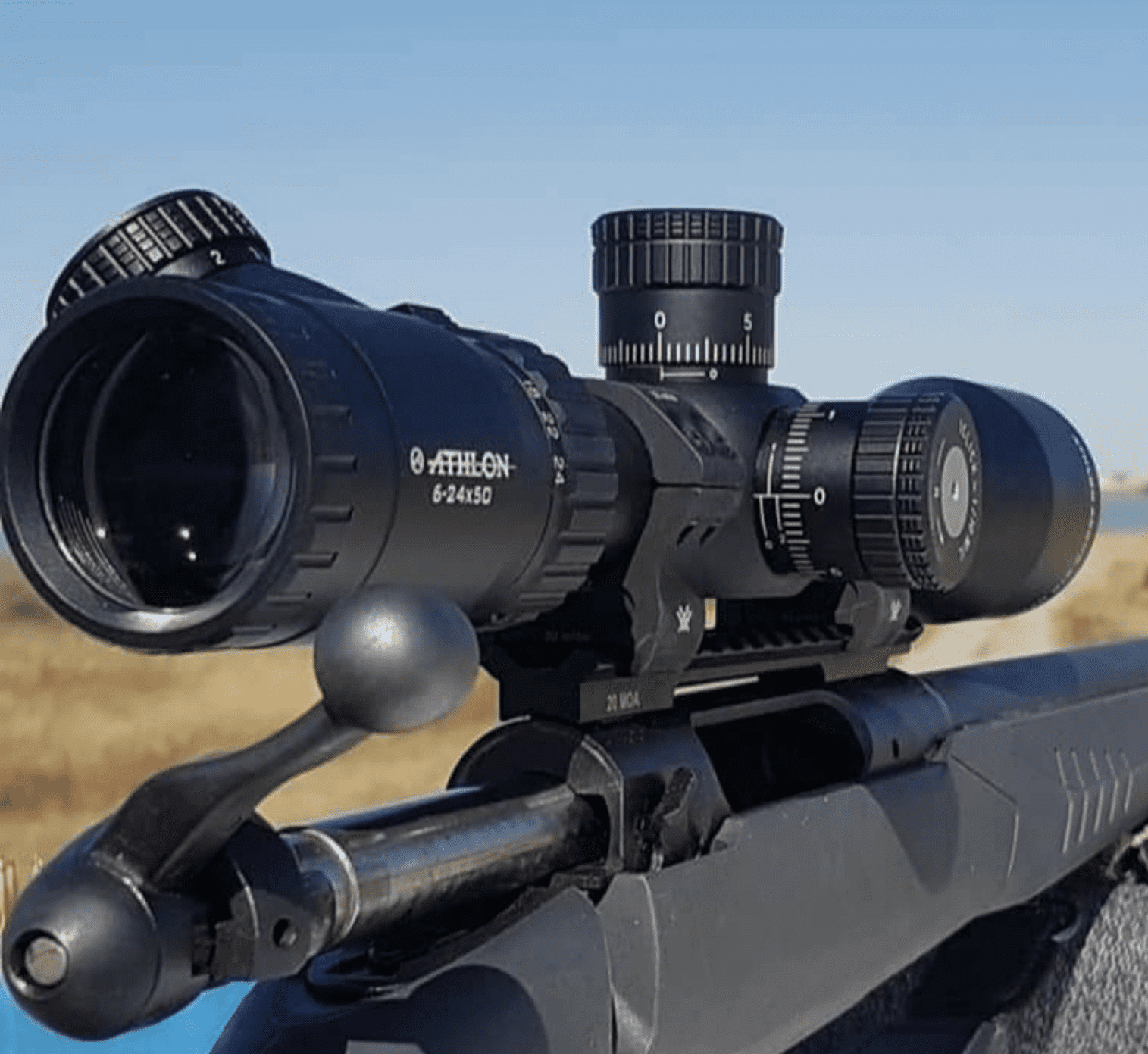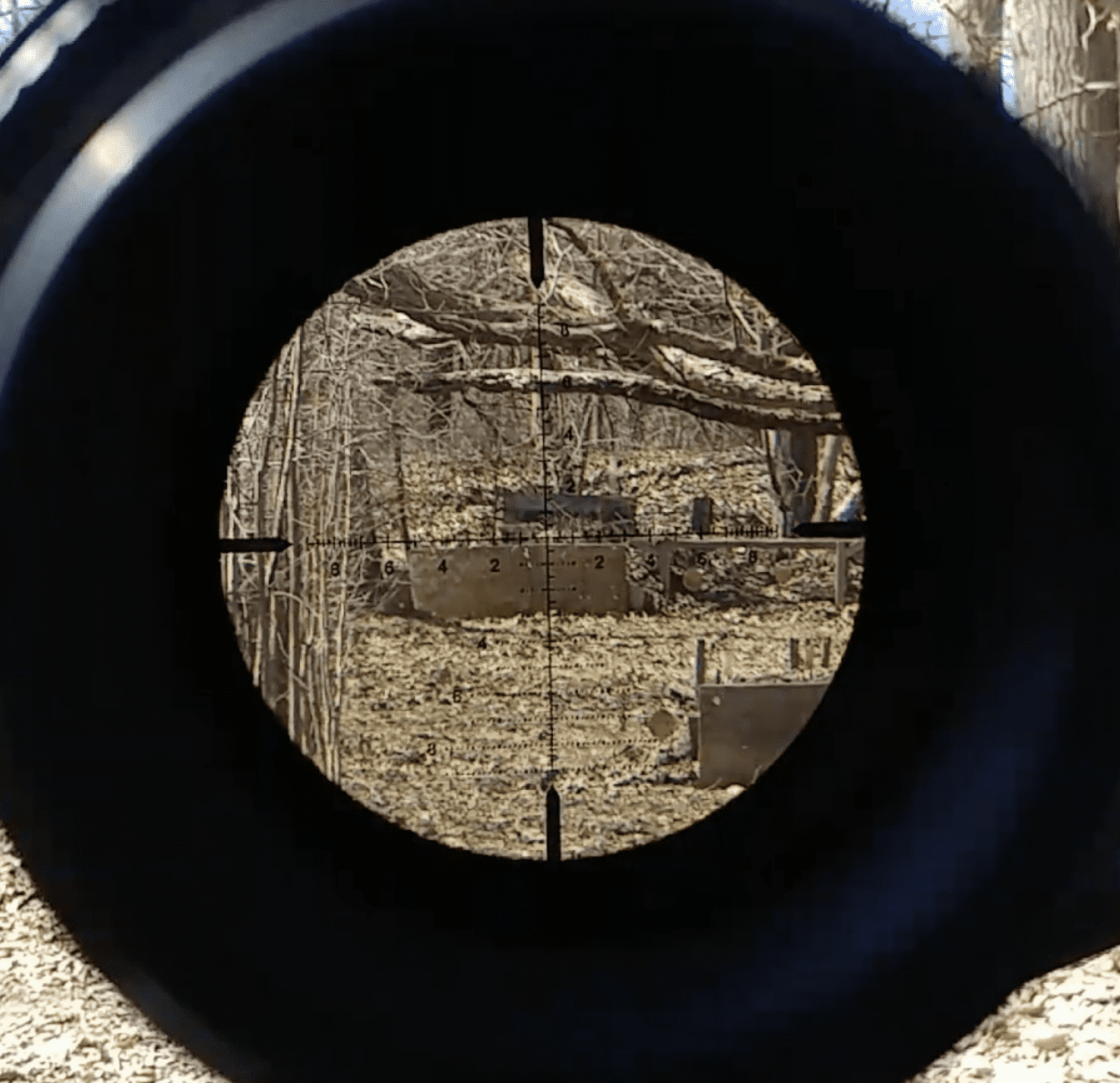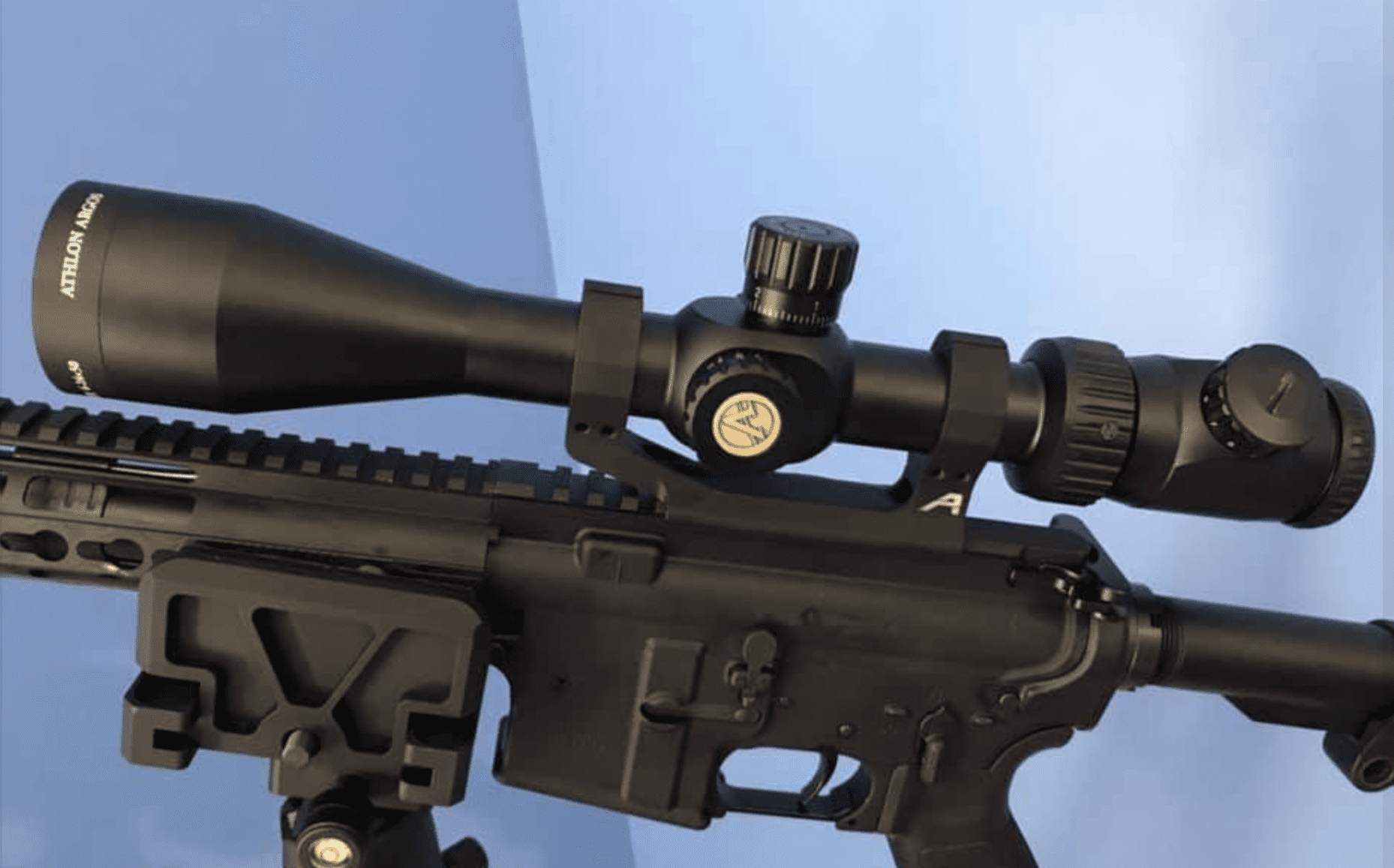After putting the Athlon Argos BTR GEN2 6-24X50 through six months of rigorous testing, from precision rifle competitions to long-range hunting scenarios, I’ve developed a comprehensive understanding of what this optic offers. While positioned in the mid-range price segment, its feature set and performance have repeatedly surprised me throughout the testing period.
For precision shooters seeking a versatile long-range optic without breaking the bank, this scope deserves serious attention.
Why You Should Trust Me?
As a competitive precision rifle shooter and firearms instructor with over a decade of experience, I’ve had hands-on experience with hundreds of scopes across all price ranges. My background includes multiple top-10 finishes in PRS competitions and extensive experience teaching long-range shooting courses.
I believe in real-world testing over extended periods. Each scope I review sees at least six months of active use before I form final conclusions. This approach helps me identify both immediate impressions and long-term performance characteristics.
How I Tested the Athlon Argos BTR GEN2 6-24X50
My evaluation began with precision testing on a custom 6.5 Creedmoor built on a Defiance action. Initial setup used Seekins Precision rings, and all accuracy testing utilized Hornady 140gr ELD Match ammunition for consistency.
Baseline testing included multiple 5-shot groups at distances from 100 to 800 yards. Tracking validation involved extensive tall target testing and multiple 20-MOA adjustment cycles. I documented both mechanical precision and return-to-zero reliability.
The scope accompanied me through three major precision rifle matches, where it faced dusty conditions and rapid position changes. I paid particular attention to clarity under match stress and turret functionality during quick adjustments.
Range testing included over 500 rounds of mixed ammunition, focusing on tracking consistency and zero retention. Throughout testing, I maintained detailed records of group sizes, environmental conditions, and optical performance.
Athlon Argos BTR GEN2 6-24X5 Review
Athlon Argos BTR GEN2 6-24X50 Specs
| Specification | Value |
|---|---|
| Magnification | 6-24x |
| Objective Lens | 50mm |
| Eye Relief | 3.3 inches |
| Field of View | 16.7-4.5 ft @ 100 yards |
| Tube Size | 30mm |
| Click Value | 1/4 MOA |
| Length | 14.1 inches |
| Weight | 30.3 ounces |
My Test Results
| Field Test | Measurement | Notes |
|---|---|---|
| 100yd Group Size | 1.0 MOA | Average of 10 five-shot groups |
| 400yd Group Size | 1.7 MOA | Average of 5 five-shot groups |
| 800yd Group Size | 2.75 MOA | Average of 3 five-shot groups |
| Tracking Error | 1.0 MOA | Over 70 MOA elevation |
| Low Light Score | 7/10 | Usable 35 min past sunset |
| Zero Retention | Excellent | No drift after 500 rounds |
| Weather Test | Pass | No internal moisture |
| Impact Test | Pass | Two 3-foot drops |
| Parallax Test | 0.7 MOA | Shift at full magnification |
Testing conducted using custom 6.5 Creedmoor with Hornady 140gr ELD Match ammunition.
Optical Performance & Reticle
The optical system impressed me with its performance relative to price point. Glass clarity proved excellent through the middle 80% of the field of view, with only minor edge distortion at maximum magnification. The APRS MOA reticle, with its 2-MOA hash marks and floating center crosshair, offered clean holds without excessive complexity – I found it particularly effective during PRS stages requiring rapid target transitions. The Christmas tree-style wind holds provided quick reference points in 2 MOA increments.
During low-light testing, I could consistently identify 10-inch targets at 600 yards until approximately 35 minutes after sunset. While not matching ultra-premium optics, this performance exceeded my expectations for the price range.
Turret System & Tracking
The exposed turret system provides positive clicks with clear tactile feedback. Through extensive tall target testing, tracking proved remarkably consistent with only 1.0 MOA deviation over 70 MOA of elevation. The zero stop system, while basic, maintained reliable return to zero throughout testing.
Turret markings remained clearly visible even in poor light, and I experienced no internal moisture issues despite testing in rainy conditions. The clicks aren’t as refined as premium tactical scopes, but they’re positive enough for practical precision work.
Magnification Range & Parallax
The 6-24x range proved highly versatile during testing. At 6x, the scope offered enough field of view for close-range stages, while 24x provided sufficient magnification for precision work out to 1000 yards. The power ring showed consistent smooth operation, though I noted slightly increased resistance in cold conditions.
Parallax adjustment worked effectively, though I measured about 0.7 MOA of shift at maximum magnification when testing extremes of head position. The side focus knob operated smoothly throughout its range, with clear distance markings that proved reasonably accurate.
Eye Relief & Eye Box
The 3.3-inch eye relief remained consistent across the magnification range, providing adequate space for proper mounting and recoil management. During competition stages, I found the eye box forgiving enough to maintain sight picture even during awkward shooting positions.
The exit pupil at 24x requires more precise head positioning, but this is expected at high magnification. At lower powers, the generous eye box facilitated quick target acquisition even during rapid position changes.
Build Quality
Throughout six months of testing, the scope demonstrated impressive durability. The most significant test came during a competition when the rifle rolled off a barricade, impacting the scope against a steel target. Despite the impact, zero remained true and the turrets continued functioning normally.
Weather sealing proved effective through multiple rainy range sessions. I tested the scope in temperatures from 25°F to 95°F and never experienced internal fogging or moisture ingress.
Mounting & Accessories
Through my testing, I found these items essential for optimal performance:
- 30mm high-quality rings
- Bubble level
- Throw lever
- Turret caps for transport
Performance Scores
| Category | Score | Notes |
|---|---|---|
| Optical Quality | 26/30 | Excellent center clarity, minor edge issues |
| Durability | 23/25 | Solid construction, reliable sealing |
| Usability | 17/20 | Good ergonomics, positive adjustments |
| Value | 14/15 | Exceptional performance for price |
| Features | 9/10 | Well-implemented tactical features |
| Total Score | 89/100 | Highly Recommended |
See how I test and rate scopes. Learn more
Advantages:
- Excellent tracking precision
- Strong center field clarity
- Reliable zero stop system
- Durable construction
Drawbacks:
- Edge distortion at high power
- Basic turret feel
- Heavy for class
- Limited eye relief
How It Compares Against Similar Optics
| Model Comparison | Magnification | Optical Quality | Build Quality | Tracking | Value | Overall Rating |
|---|---|---|---|---|---|---|
| Athlon Argos BTR GEN2 | 6-24×50 | Very Good | Excellent | Excellent | Outstanding | 89/100 |
| Vortex Viper PST Gen2 | 5-25×50 | Excellent | Excellent | Outstanding | Good | 91/100 |
| Primary Arms PLx | 6-30×56 | Very Good | Very Good | Very Good | Good | 85/100 |
| Athlon Midas TAC | 6-24×50 | Good | Very Good | Good | Very Good | 82/100 |
I’ve tested several competing scopes in this category alongside the Argos. Here’s how they compare:
The Vortex Viper PST Gen2, tested in its MOA configuration, offers superior glass quality and more refined turret feel. During testing, its low-light performance exceeded the Argos by about 15 minutes. However, it commands a significantly higher price point. The Viper’s tracking proved marginally more precise with 0.75 MOA deviation over the same elevation range, but the practical difference in field conditions was minimal. For shooters with larger budgets, the Viper’s refinements may be worth the additional investment, but the Argos delivers remarkable value for its price point.
The Primary Arms PLx 6-30×56 represents a step up in magnification range. Its optical clarity closely matches the Argos, though edge distortion at maximum magnification was more noticeable. The larger 56mm objective provides better light gathering, adding about 10 minutes of usable shooting time in low light conditions. However, the higher magnification range adds both weight and cost. While it’s a capable optic, I found its price-to-performance ratio less compelling than the Argos.
The Athlon Midas TAC, with identical magnification range to the Argos, offers similar features at a slightly lower price point. However, during testing, I noticed more pronounced chromatic aberration and slightly less precise tracking, with about 1.5 MOA deviation over the same elevation range. The turret feel was notably mushier, though zero retention proved reliable. While it represents a viable budget option, the additional investment in the Argos delivers meaningful performance benefits.
Frequently Asked Questions
How does the MOA reticle compare to the MRAD version?
The MOA version offers more familiar measurements for shooters used to imperial units. I found the 2-MOA hash marks particularly intuitive for holdovers at common hunting distances.
Is the illumination bright enough for daylight use?
The illumination proves adequate in most lighting conditions but can be difficult to see in bright desert environments. The center dot remains visible against dark targets even in full sunlight.
How does it handle high recoil?
Throughout testing with various calibers including .300 Win Mag, the scope maintained zero and showed no internal issues. The turret adjustments remained positive and consistent.
Is the zero stop system reliable?
While basic compared to higher-priced options, the zero stop proved consistent throughout testing, returning to zero within 0.25 MOA even after multiple elevation changes.
Final Words
After six months of intensive testing, the Athlon Argos BTR GEN2 6-24×50 MOA has proven itself as a serious contender in the mid-range precision optic market. While it may lack some refinements found in premium offerings, its core performance characteristics – tracking precision, optical clarity, and mechanical reliability – meet the demands of both competitive and hunting applications.
The scope particularly excels in practical precision shooting scenarios, where its reliable tracking, clear glass, and thoughtful reticle design allow shooters to maximize their rifle’s potential. While premium optics offer incremental improvements in specific areas, the Athlon Argos BTR GEN2 delivers exceptional value for shooters seeking high performance without stretching into top-tier price points.

Hi, I am Jerry L. Miculek and I am experienced firearms and optics expert. Guns are not just a hobby for me, they are my passion and life. You can learn more about me on my About page.